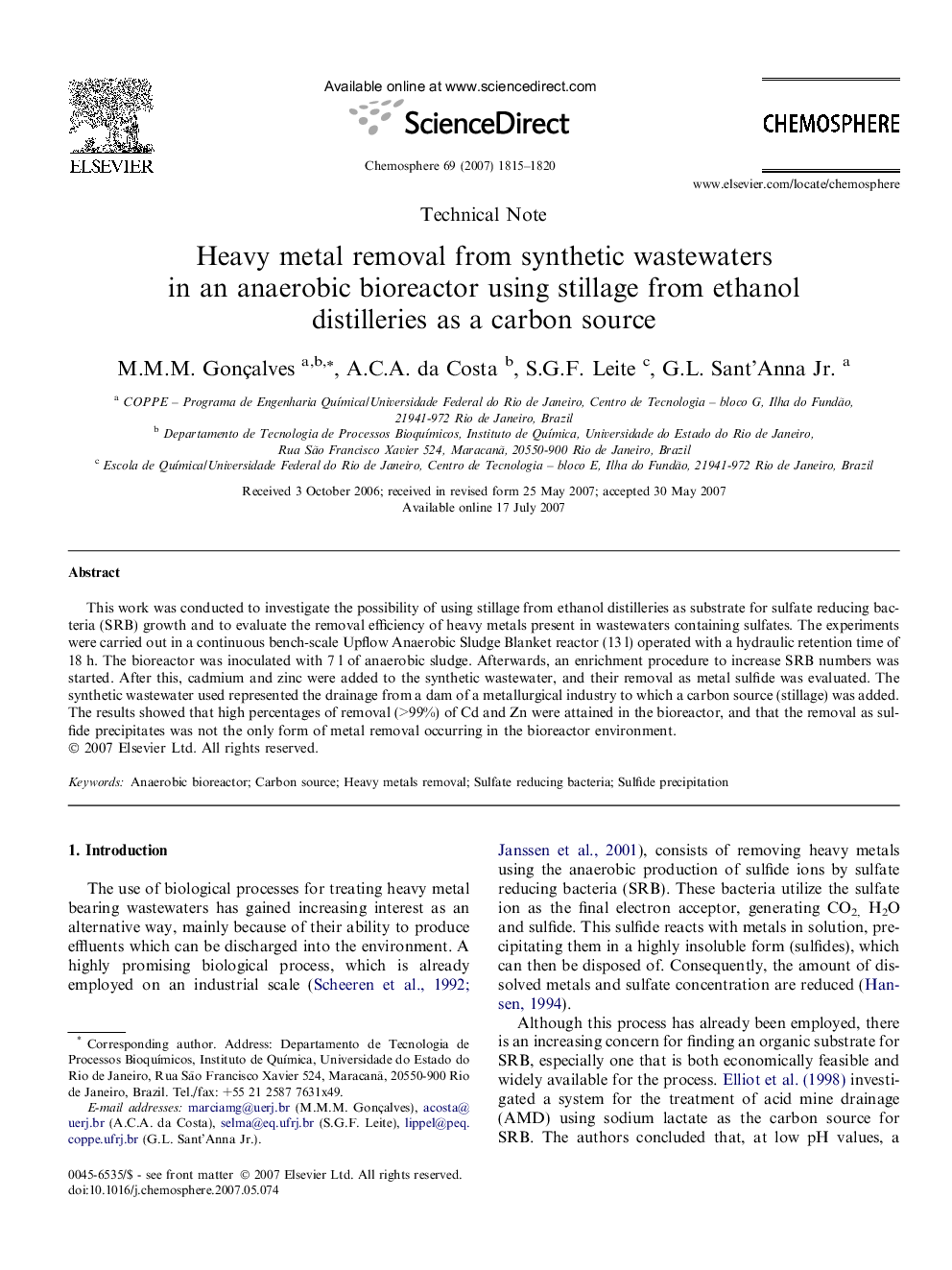| Article ID | Journal | Published Year | Pages | File Type |
|---|---|---|---|---|
| 4415003 | Chemosphere | 2007 | 6 Pages |
This work was conducted to investigate the possibility of using stillage from ethanol distilleries as substrate for sulfate reducing bacteria (SRB) growth and to evaluate the removal efficiency of heavy metals present in wastewaters containing sulfates. The experiments were carried out in a continuous bench-scale Upflow Anaerobic Sludge Blanket reactor (13 l) operated with a hydraulic retention time of 18 h. The bioreactor was inoculated with 7 l of anaerobic sludge. Afterwards, an enrichment procedure to increase SRB numbers was started. After this, cadmium and zinc were added to the synthetic wastewater, and their removal as metal sulfide was evaluated. The synthetic wastewater used represented the drainage from a dam of a metallurgical industry to which a carbon source (stillage) was added. The results showed that high percentages of removal (>99%) of Cd and Zn were attained in the bioreactor, and that the removal as sulfide precipitates was not the only form of metal removal occurring in the bioreactor environment.
